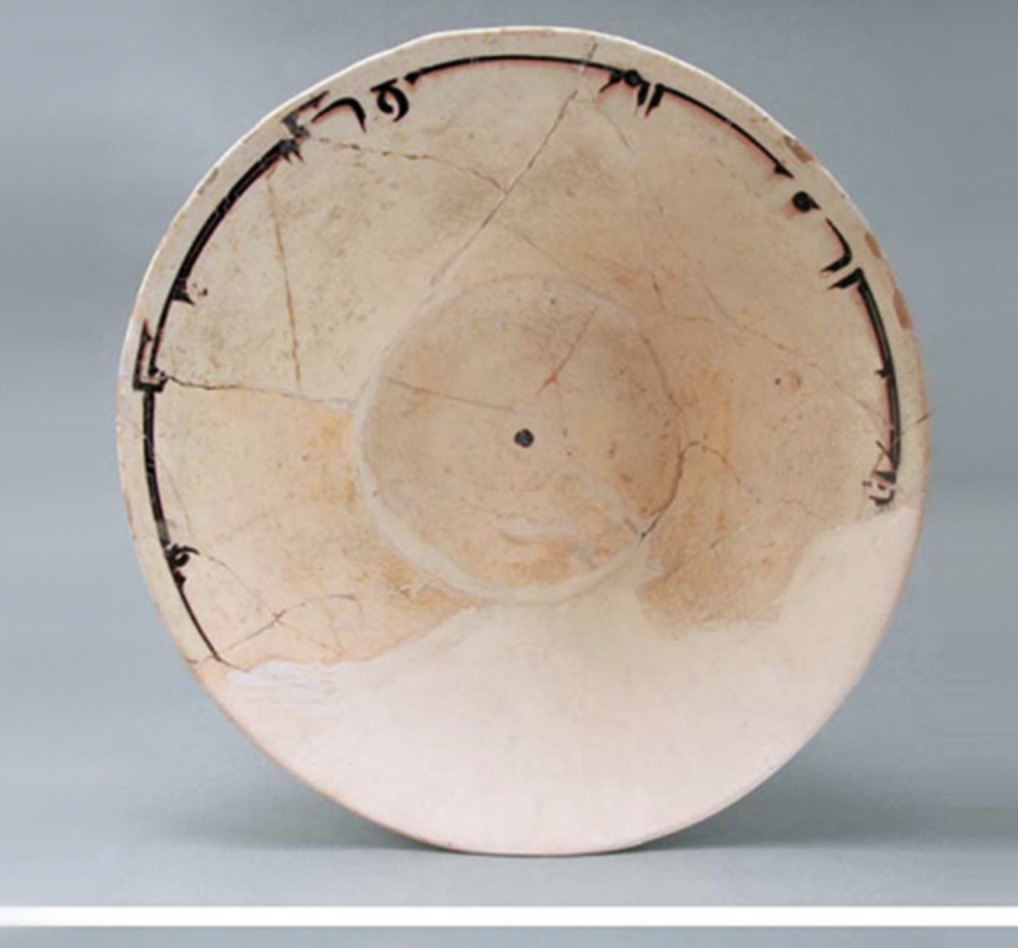In the 7th-8th centuries AD the Muslim Arabs invaded Central Asia. The theme of their conquest of Central Asia is reflected in images in the display including a 12th century AD miniature ‘Arab Forces on Campaign’, the watercolour ‘Looting of a City by the Arabs’ by V.E. Kaidalov (1957) and the painting ‘Taking Tribute’ by L. Abdullaev (1956). Other images illustrate local Sogdian warriors. One of the central exhibits of the section is a facsimile edition (printed in 1905) of the Koran of Caliph Osman – a unique monument of Arab writing of the first half of the 7th century AD. The section also has a display of coins minted by the Arab rulers al-Makhdi, al-Mamun and al-Amin in the cities of Rayy, Baghdad, Balkh, Samarkand, Bukhara, Merv, etc in the 8th-early 9th centuries AD. Although local rulers considered themselves as representatives of, and subordinate to, the Caliphs, with time they gradually became independent of the central authorities. In 821 AD Tahir ibn Husayn established the state of the Tahirids (821-873 AD) on the territory of Khorasan and Maverannahr. From 874-999 AD the state of the Samanids dominated the region, as can be seen on the map displayed in this section.

In the second half of the 9th century AD the Turkish speaking Chigil, Yagma and Karluk tribes formed the state of the Karakhanids. In 999 AD the Karakhanids captured Bukhara and subsequently ruled Central Asia and eastern Turkestan. Under their dominion more than 40 mints were active in western and eastern Turkestan, in which were produced gold, silver and copper coins.
The period of the 9th-12th centuries AD was one of the most important in the long history of Central Asia, and was characterised by highly sophisticated achievements in science and culture which have enriched humanity, including the spheres of architecture, decorative arts, poetry, rhetoric and calligraphy. Significant developments also took place in agriculture. From the Samanid period to our times has been preserved the mausoleum of Ismail Samani (d. 907 AD - the founder of the Samanid state) in Bukhara – one of the finest examples of architecture from the Middle Ages. The mausoleum is impressive in the proportion of its parts, in its simple but beautiful decoration and in the engineering mastery of its builders. A unique relic on display in this section is a carved wooden column of the 9th-10th centuries AD found in the remote village of Oburdon in the upper reaches of the Zarafshan River.